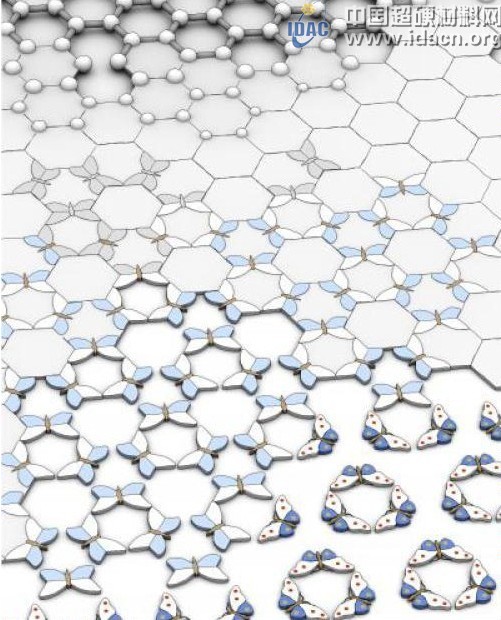Abstract Recently, Dr. Roman Gorbachev of the University of Manchester in the United Kingdom published a study in Nature. When graphene was placed on insulator boron nitride, also known as "white graphene", the electronic properties of graphene changed dramatically...
Recently, Dr. Roman Gorbachev of the University of Manchester in the United Kingdom published a study in Nature. When graphene was placed on insulator boron nitride, also known as "white graphene", the electronic properties of graphene changed dramatically, showing a butterfly shape. arrangement. 
The combination of graphene and other materials in a number of hierarchical structures to prepare new applications has not yet been implemented in the scientific and industrial fields.
Graphene has thousands of times more conductivity than copper because of the special charged electron form inside graphene; this charged carrier is called Dirac fermion. These studies usually require institutions such as CERN (CERN) to provide enough equipment to carry out. Writing a general physical address in a benchtop experiment is one of the important applications of graphene.
Now, scientists at the University of Manchester have been able to make multiple clones of the Dirac fermion. They placed graphene on boron nitride so that graphene electrons could "feel" to separate nitrogen and boron atoms; the electrons would rearrange and produce multiple copies of the Dirac fermion.
Through the application of magnetic fields, researchers can clone more Dirac fermions. These clones then produce a complex pattern: the Hofstadt butterfly pattern. The pattern was first predicted by mathematician Douglas Hofstadter in 1976, but so far there have been only a few ambiguous reports and studies.
In addition, the study also predicts that the properties of the material can be altered by placing overlapping materials of atomic thickness. This is of great help to the application of graphene in future ultra-high-speed photodetectors and transistors.
Professor Andre Geim and Professor Nobel Laureate said that it would be great for the Hofstadt butterfly pattern that has puzzled scientists for decades to get detailed information; however, the current study has proven them. It is not easy to develop a new type of graphene material by a reasonable sorting method by superimposing a single atomic surface.
Dr. Gorbachev added that they have prepared a number of graphene-like atomic thickness materials and placed them on top of each other for research. Such artificial crystals were sci-fi decades ago, and now their labs have made them a reality. Perhaps one day in the future, people will see the application of this product in their daily gadgets.
Professor Geim said, "This research is a huge improvement over ordinary graphene. We have laid a solid foundation in the new research field. Perhaps this is more important and more scientific than the graphene itself." From Science Daily)
Various designs of colorful water tank to choose. Wall Hung Water Tank, suitbale for squatting pan.
Direct factory with professional R&D department, product range covers Smart Toilet, Bidet cover, toilet seat, tank fittings, flush tank, flush valves, and Intelligent Toilet.
We insist on the philosophy of "Technology first, Quality first, Credit first, Clients first" . Our R&D and customer service
White Tank,Dual Flush Tank,Flush Toilet Tanks,Toilet Flush Tank
XIAMEN JIEENTE IMPORT AND EXPORT CO.,LTD , https://www.xiamenjieente.com